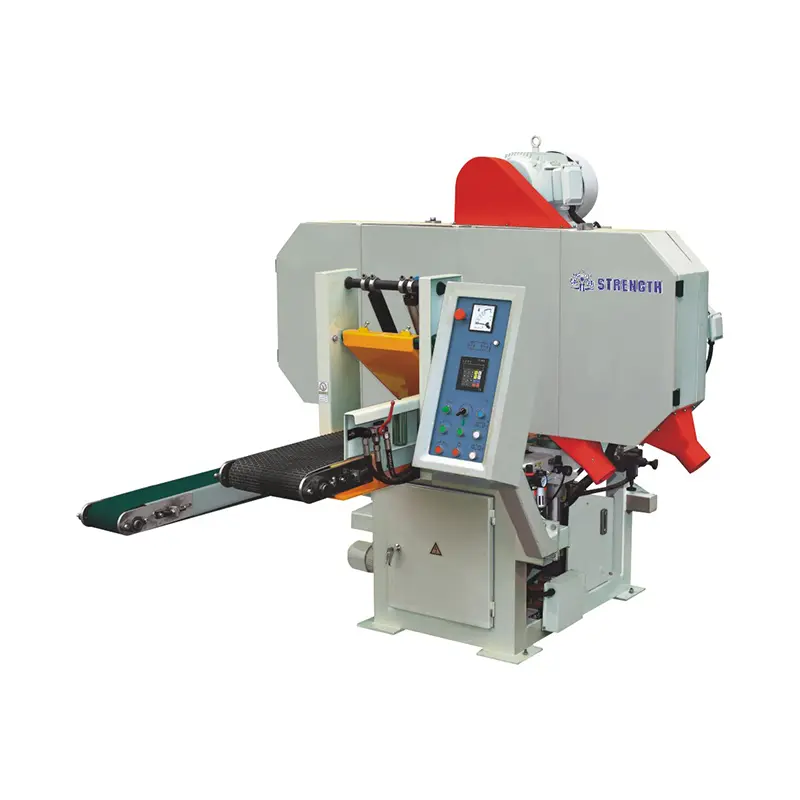Who are the main customer groups for woodworking planers?
Global Market Overview of Woodworking Planers
As a core piece of equipment in wood processing, woodworking planers enjoy stable and continuously growing market demand globally. According to market research data, the global woodworking planer market size was approximately US$277 million in 2024 and is projected to reach US$490 million by 2031, representing a compound annual growth rate of 8.6%. This growth is primarily driven by the continued development of the global construction and furniture manufacturing industries, as well as the popularity of DIY culture in many regions.
Geographically, the Asia-Pacific region, North America, and Europe are the main markets for woodworking planers. The Asia-Pacific region, especially China, Japan, and Southeast Asian countries, holds a significant market share due to their large furniture and construction industries. Meanwhile, European countries such as Germany maintain a leading position in the European market thanks to their advanced industrial base.
Analysis of Main Customer Groups for Woodworking Planers
1. Professional Woodworking and Furniture Manufacturers
Group Characteristics: This group includes various professional users ranging from independent craftsmen to large furniture manufacturers. They are frequent and heavy users of woodworking planers, with extremely high requirements for the processing accuracy, stability, and throughput of the equipment.
Core Needs and Equipment Preferences:
Processing Accuracy and Efficiency: They need planers capable of efficiently processing various types of wood, providing smooth, precise machined surfaces. For example, twin-spindle planers with automatic feeding are favored for their improved accuracy of reference surfaces and processing efficiency.
Heavyweight and Durability: For frequently used production environments, robust, durable, and long-term continuous operation heavy-duty planers are crucial. For example, some heavy-duty double-sided planer designs meet the stringent requirements of building material stores and manufacturing plants.
Specific Functions: Furniture manufacturers may also require planers with a degree of customization to accommodate special workpiece dimensions or processing techniques.
2. Construction Industry Practitioners
Group Characteristics: Carpentry teams on construction sites are primarily responsible for fabricating and repairing formwork, door and window frames, and various wooden components. Their working environment is complex, placing unique demands on the portability, adaptability, and durability of their equipment.
Core Needs and Equipment Preferences:
Portability and Mobility: Frequent movement between construction sites creates a high demand for portable electric planers. These tools are easy to carry and adaptable to various on-site processing conditions.
Harsh Environment Adaptability: Construction site environments are relatively harsh, so equipment needs better dustproof and impact resistance to ensure reliability under complex conditions.
Rapid Processing Capacity: Planers capable of quickly processing common construction timber (such as square timber and boards) are more popular in this field, as this directly affects project progress.
3. Advanced DIY Enthusiasts and Woodworking Enthusiasts
Group Characteristics: This is a growing group, mainly consisting of hobbyists with a strong interest in woodworking who complete projects at home. They may be professional engineers or designers, or simply craft enthusiasts.
Core Needs and Equipment Preferences:
Value for Money and Ease of Use: Compared to professionals, they typically prioritize product price, ease of use, and safety. Bench planers and lightweight electric planers, which are easy to operate and maintain, sell well in this market.
Space Adaptability: Due to limited workspace (such as home garages or small workshops), the footprint and ease of storage of equipment are also important considerations.
Multi-functionality: For enthusiasts with limited budgets, multi-functional equipment capable of performing multiple processing tasks is often more attractive.
Different Customer Needs in Major Global Regions
North American Market: The DIY culture is extremely popular, and home garage workshops are very common, giving rise to a large market for home and semi-professional planers. At the same time, the region has many professional construction companies and woodworking shops, creating a strong demand for high-performance professional equipment.
European Market: Consumers and practitioners generally value the superior craftsmanship, safety standards, and environmental performance of equipment. Well-known European brands typically cater to these characteristics in their design and manufacturing.
Asia Pacific Market: Demand in this market is clearly polarized. On the one hand, the rapidly growing middle class has spurred a growing number of DIY enthusiasts and high-quality custom furniture workshops; on the other hand, the large manufacturing base provides a broad market for cost-effective industrial-grade equipment.
Industry Development Trends and Corporate Strategy Recommendations
According to market research, the woodworking planer industry is showing a trend of continuous growth, primarily driven by the stable development of the global construction and furniture industries. For companies targeting international markets, understanding and adapting to the needs of different customer groups is crucial.
Corporate Strategy Recommendations:
Product Line Layering: Develop product lines with different positioning for professional users and enthusiasts. The professional line emphasizes performance, durability, and precision; the enthusiast line emphasizes ease of use, safety, and cost-effectiveness.
Strengthening Core Values: Regardless of the group, ease of operation and maintenance are highly valued product attributes. A clear user interface and convenient maintenance design can significantly enhance product competitiveness.
Focusing on Localization: Deeply understand the cultural preferences, work habits, and safety standards of the target market, and provide corresponding product specifications, marketing materials, and technical support.
Post time: Nov-26-2025

